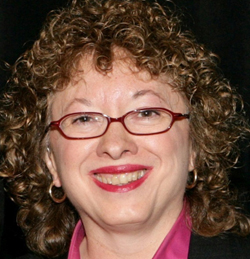Soldiers during the wars in Iraq and Afghanistan have suffered many head injuries, often from exploding I.E.D.s. When the Department of Defense (DOD) asked the biomedical engineering community for a device that could measure intracranial pressure in the field, Dr. Anthony Bellezza, who had experience with glaucoma research as part of his graduate work in biomedical engineering at Tulane University, was up for the challenge.
Eight years later, Bellezza, his co-founders and colleagues have developed Cerepress, a hand-held, non-invasive device that measures intraocular pressure by scanning the back of the eye, allowing personnel in the field — or a nurse in the ER — to triage soldiers or patients for head trauma.
Now the company, founded in 2007, is getting ready for clinical testing, clearance with the FDA and entrance into the market.
What inspired you to found Third Eye Diagnostics?
I was always interested in science and being an engineer. I didn’t want to be a physician, but I was interested in the medical field. I took economics because I was interested in doing something with business aspects.
William Lai and I were working together at an engineering and scientific consulting firm called Exponent in Philadelphia. I saw a solicitation from the Department of Defense; they were looking for a device that could triage soldiers in the field who may have [experienced a] head injury.
Back when I was in academia, my background was in glaucoma research. This solicitation was asking if someone could come up with a device that could look at intracranial pressure and evaluate it. This pressure is the single most important metric a physician can look at when assessing whether the brain is at risk for damage.
I thought this could be done by gathering information from the back of the eye and correlating it with intracranial pressure. There is a well-established connection qualitatively, but it’s been difficult for anyone to quantitatively figure out what’s going on in the back of the eye, because the blood vessels we look at there are difficult to interrogate for blood pressure.
Around the optic nerve in the back of the eye is cerebrospinal fluid, the same fluid that’s in the brain. That’s where the intraocular pressure is measured, in that fluid. If there is high pressure in the fluid, squeezing the optic nerve head, the blood pressure in the central retinal vein sitting on the nerve will also go up. So how do you measure the pressure in those veins?
We came up with a way, using a small, hand-held device, to evaluate the pressure in that vein without having to pierce the eye. Once we get that vein pressure, people in the medical field know that it’s correlated with pressure within the cerebrospinal fluid in the brain. Our device quantifies that.
The idea came around 2007. William and I sent a proposal to the DOD; it wasn’t funded, but it got good reviews overall. So we decided to give it a shot anyway.
How did you get started?
We did a patent search and realized that a neurologist in Boston, Henry Querfurth, had just recently patented an idea that was very similar to what we were looking at. He was an avid mountain climber, and thought an increase in intracranial pressure was related to high altitudes. So I called him, and he said he was a neurologist with no business acumen, but he’d love to collaborate. Will, I and two other partners put money together and licensed his technology.
We went to Ben Franklin Technology Partners of Northeastern PA (BFTP/NEP) with the license to his patent in our hands and our idea, and they were nice enough to give us our first funding in 2008.
We used that funding to spend two years writing federal grants that would give us sufficient funding to properly do research and development.
The National Science Foundation (NSF) gave us funding with two SBIR Phase 1 grants. (We’re now in the middle of a Phase 2 SBIR grant from the NSF.) We also had funding from Pennsylvania and an angel investor as well.
So in 2010 we began our R&D. There were big optical components and other kinds of testing we had to go through.
Now we have six employees, three full-time and three part-time. We think our device will be ready for testing in a clinic in four to six months. We have collaborated with St. Luke’s University Health Network in Bethlehem, so we can probably do some data collection there. We also have colleagues at Brown University, the University of Pennsylvania and Boston University, where we can do clinical testing and data collection.
We’re in the process of raising our Series A funding.
Where are you located?
We work from our homes two or three days a week; we have a small lab in Jenkintown, and we have office space at Ben Franklin TechVentures on the Lehigh University campus. The six of us are in various places in the Lehigh Valley and Philadelphia regions. We get together physically a couple of times a week, and do a lot of Skype and virtual work from our homes.
If we get our funding, we’ll be looking for a proper headquarters somewhere in the Lehigh Valley or Philadelphia areas. We may rent a larger space at TechVentures. They [BFTP/NEP] were so great to take a chance on us in the beginning, I feel we owe it to them to pay it forward by staying in the area.
What has been the biggest challenge so far?
From a technological standpoint, we found another group that was working on ophthalmic medical device research: Fuller Research Corporation in Jenkintown. We partnered with them, and eventually merged. Their CEO, Terry Fuller, is now our CEO. Because of his company’s expertise in ophthalmic medical devices, we were able to get over some technical hurdles we may not have been able to otherwise.
The biggest challenge was that we had the device — which could take video of the back of the eye — and it worked quite well when we dilated the pupil. But clinicians told us that we couldn’t dilate the pupil, because one of the signs of head trauma they look for is a dilated pupil.
Taking a video of the back of the eye when the pupil is really small, and doing all the other things we wanted to do with our device, is really hard.
We contracted an optical engineering group in Tucson, Ariz., called Breault Research, to help us change our optical system so we could illuminate the back of the eye through a constricted pupil, take video and collect the data we wanted.
What’s the big differentiator for your device?
Right now, if you bump your head and go to the ER, they might observe you, give you a CT scan, but it’s all qualitative. Then they wait to see if you deteriorate. If the physician decides you need to be monitored for intracranial pressure, they drill a hole in your skull and they insert a pressure-monitoring instrument.
Our device can quantify whether you’re deteriorating and catch it sooner. It’s hand-held and simple enough to be used by a nurse. It’s a pretty powerful tool.
We’re not looking to replace the invasive monitoring used for intracranial pressure because those monitors are both diagnostic and therapeutic; they can drain the fluid if the pressure goes above a certain point. But our device can prevent an invasive monitor being put in when it’s not necessary. This is not just better care for the patient, but, because it can get patients in and out of the ICU quicker, it’s economically better for the hospital.
What’s next for Third Eye Diagnostics?
We’ll be finalizing the device and testing it in patients who already have invasive intracranial pressure monitors in place, so we can measure the device’s accuracy against the gold standard. This will probably take about six to nine months. Then we need to clear it with the FDA as a Class 2 device.
Once we do that, we’ll begin winding up for manufacturing. We’ll probably select a strategic partner with experience in the neurological space to do this. What we expect is that the large subassemblies will be contracted out, and the final assembly will be done locally.
Writer: Susan L. Pena

http://www.3-e-d.com/
116 Research Drive Bethlehem, PA
↑ Top


